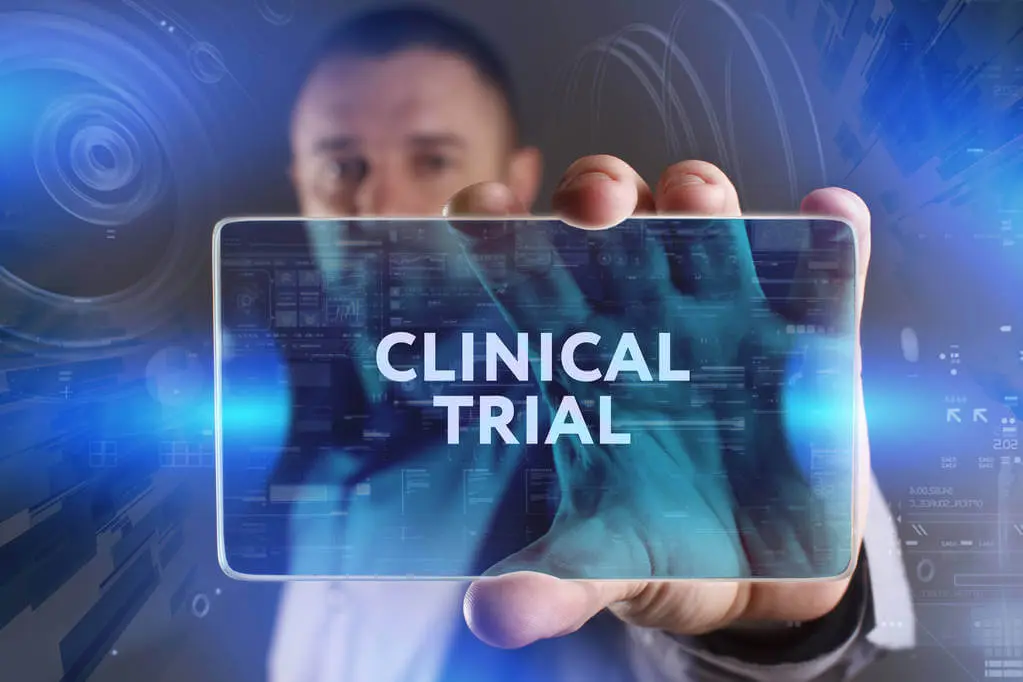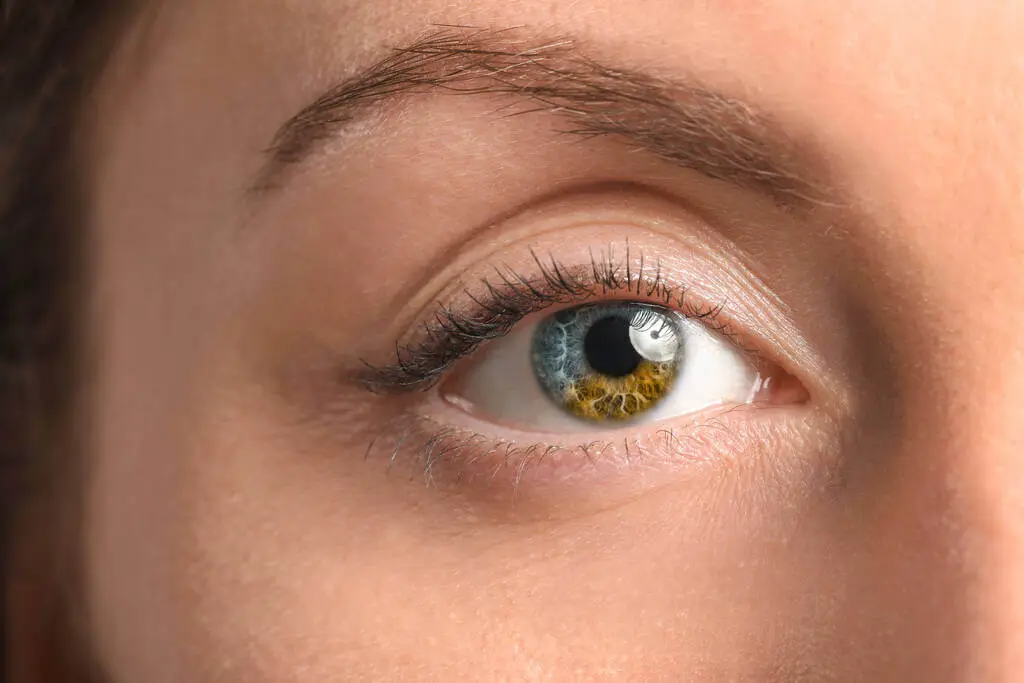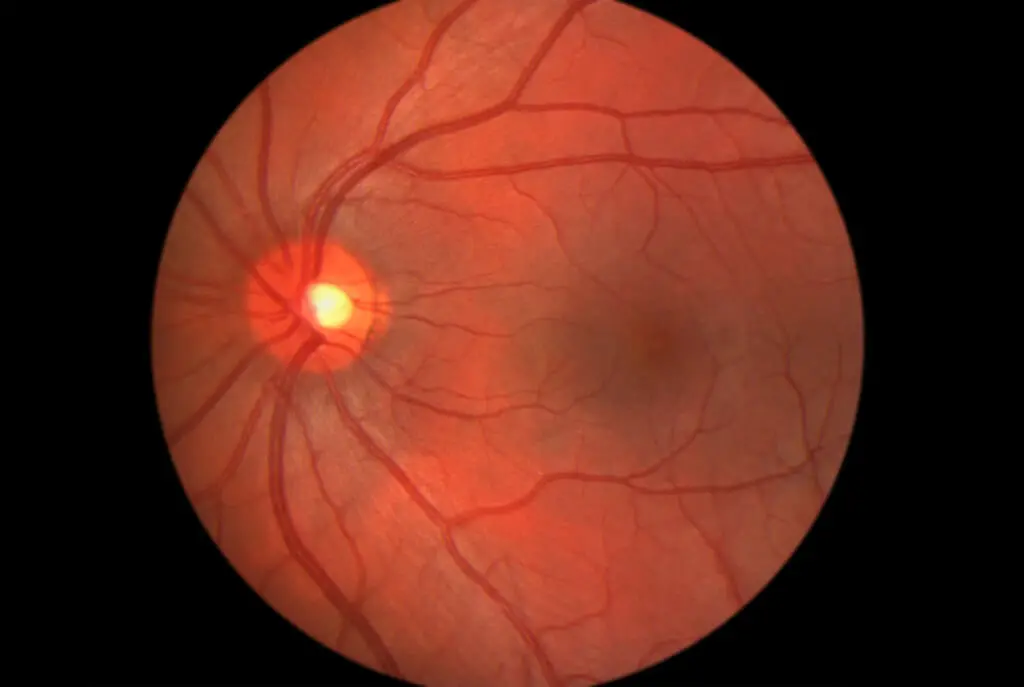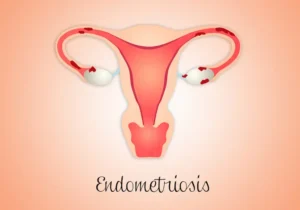Overview of Age-Related Macular Degeneration
Age-related macular degeneration (ARMD) is a common eye condition that affects millions of people worldwide, particularly those over the age of 50. It is a progressive disease that causes damage to the macula, the central part of the retina responsible for sharp, clear vision.
There are two main types of ARMD: dry and wet. The dry form accounts for about 80-90% of cases and is characterized by the gradual breakdown of light-sensitive cells in the macula. The wet form is less common but more severe, as it involves the growth of abnormal blood vessels under the retina that can leak fluid and cause scarring.
Both forms of ARMD can lead to severe vision loss and may significantly impact an individual’s ability to perform daily activities requiring central vision, such as reading, driving, and recognizing faces.
Currently, treatment options for ARMD are limited, with monthly injections being the standard of care for the wet form. However, there is promising news on the horizon with a potential game-changer for the treatment of macular degeneration.
The Need for a Game-Changer
ARMD is a retinal disease that leads to severe vision loss, particularly in the central vision. With the aging population steadily increasing, the need for a game-changer in the treatment of ARMD has become more pressing than ever before.
Current treatment options for ARMD are limited and often come with significant drawbacks. In the case of wet ARMD, patients often require monthly injections directly into the eye to control the abnormal blood vessels causing vision loss. Such treatment burden can be overwhelming for patients and may result in non-compliance.
Additionally, for the dry forms of ARMD, there are currently no official treatment options available, leaving patients without any hope for improvement.

The impact of vision loss on patients with ARMD cannot be overstated. Tasks as simple as recognizing faces, reading, or driving can become incredibly challenging or impossible. This not only affects the individual’s independence but also their overall quality of life.
Patients with ARMD face numerous challenges and limitations. They often experience blind spots or distorted vision, severely impacting their ability to perform daily activities. The risk of vision loss further increases with late-stage ARMD, making the search for effective treatments all the more crucial.
Given the limitations of current treatments and the profound impact of vision loss on patients, the development of a game-changing treatment for ARMD is of utmost importance. Such ground-breaking treatment options have the potential to enhance visual outcomes and significantly improve the lives of those affected by this debilitating eye disease.
Clinical Trials of the New Cure
The field of ophthalmology is eagerly awaiting the results from clinical trials of a potential game-changer in the treatment of macular degeneration. Researchers have been working on developing a ground-breaking treatment that could revolutionize the way we approach age-related macular degeneration ARMD. These clinical trials aim to evaluate the effectiveness and safety of the new cure, offering hope for millions of patients worldwide suffering from this debilitating eye disease.
With the potential to address both wet and dry forms of ARMD, this new treatment could provide a much-needed solution for patients currently facing limited or no treatment options. Retina specialists and eye doctors are closely monitoring the progress of these trials, recognizing the significance of finding a more effective and convenient treatment for macular degeneration.
As the trials progress and results are analyzed, the ophthalmology community eagerly anticipates the potential of this new cure to transform the lives of individuals affected by macular degeneration.
Overview of the Treatment
The current treatment protocol for ARMD often involves frequent in-office injections, which can be challenging for patients. ARMD is a retinal disease that leads to progressive vision loss, specifically affecting central vision. There are two forms of ARMD: wet and dry.
Patients with wet ARMD typically require monthly injections of drugs like aflibercept to inhibit the growth of new blood vessels and prevent further vision loss. However, this treatment burden can be a significant challenge. Frequent visits to the eye doctor for injections can be time-consuming, expensive, and disruptive to daily life. Moreover, the fear of injections and the associated discomfort can be distressing for some patients.
Fortunately, a promising new treatment for ARMD is emerging, which could potentially address these challenges. This ground-breaking treatment involves the use of placental growth factors to stimulate the regeneration of RPE cells, providing a potential alternative to the frequent injections. This new approach aims to reduce the treatment burden for patients and improve their quality of life.
To highlight the benefits of this new treatment, patient testimonials can be instrumental. These testimonials can share the positive experiences of patients who have undergone the new treatment, emphasizing its efficacy and the improvements in their vision.
By reducing the need for frequent injections and offering a more patient-friendly alternative, this new treatment has the potential to be a game-changer in the field of ophthalmology, providing hope for individuals with ARMD and their families.
Research Results from Trials
Research results from clinical trials have shown promising outcomes for the new cure for ARMD. One notable study is the PHOTON study, which evaluated the efficacy of the drug aflibercept in treating edema in both diabetic retinopathy and wet AMD.
The results from the PHOTON study demonstrated that aflibercept was highly effective in reducing edema and improving visual outcomes in patients with wet AMD.
Additionally, the drug was found to be equally effective in treating edema in diabetic retinopathy.

Another significant clinical trial, known as the PULSAR trial, investigated the use of a more concentrated 8mg dose of aflibercept. The study found that this higher dose, given less frequently, was as effective in treating wet AMD as the lower dose. This result is encouraging as it suggests that patients can potentially receive the same level of efficacy while reducing the frequency of injections.
These research findings highlight the efficacy of aflibercept in treating edema associated with both wet AMD and diabetic retinopathy. This breakthrough treatment has the potential to provide significant benefits for patients, improving their visual outcomes and reducing the treatment burden associated with frequent injections.
What Does the Future Hold?
As technology advances and research in the field of ophthalmology continues to evolve, the future for patients with macular degeneration looks promising. With ground-breaking treatments and innovative approaches, there is hope for improved outcomes and a reduction in the burden of treatment for individuals suffering from age-related macular degeneration (AMD).
Exciting developments in the field have showcased potential cures and game-changing therapies that may revolutionize the approach to managing this debilitating eye disease.
What These Results Mean for Patients with ARMD
The research results for patients with ARMD hold immense implications, considering the current limitations of available treatments. ARMD, a group of retinal diseases causing vision loss in the central vision, has been a challenge to address effectively. The existing treatments, such as monthly injections for wet ARMD and eye drops for dry forms, have shown some success but are not without drawbacks.
This breakthrough treatment offers hope for improved visual outcomes and potential vision preservation for individuals with advanced forms of macular degeneration. The study, conducted by a team of researchers led by a renowned professor of ophthalmology and associate professor from Stanford University, focused on using placental growth factors to target the retinal pigment epithelial (RPE) cells.

The researchers found that this approach, combined with the drug aflibercept given through port delivery instead of eye injections, significantly slowed down disease progression and reduced the risk of severe vision loss.
The key benefits of this ground-breaking treatment include its potential to stabilize or improve visual acuity, reduce the risk of geographic atrophy and choroidal neovascularization, and enhance overall quality of life for ARMD patients.
Furthermore, this treatment could reduce the treatment burden faced by patients, avoiding the need for invasive and frequent injections. By offering a less cumbersome and more effective solution, this game-changing treatment brings new hope to those suffering from ARMD.
Next Steps in Development and Implementation of the New Treatment
The development and implementation of this promising new cure for ARMD involves several important steps. The first step is conducting rigorous clinical trials to assess the safety and effectiveness of the treatment. These trials involve a carefully designed research process to collect data and evaluate the potential benefits and risks.
During the clinical trials, researchers closely monitor participants’ visual outcomes and any potential side effects to determine the treatment’s efficacy. This critical phase helps establish the treatment’s effectiveness in preserving or improving vision and reduces the risk of severe vision loss.

As the research progresses, key milestones are achieved, indicating the treatment’s potential for wide-scale implementation. These milestones include the identification of optimal dosages, refining the administration method, and assessing the long-term effects of the treatment. The goal is to establish a safe and efficient treatment option that can be widely available to ARMD patients.
However, it is crucial to acknowledge potential side effects that may arise during the development and implementation process. Although the initial clinical trials have shown promising results, ongoing research is needed to fully understand any potential risks and ensure the treatment’s safety. Through rigorous monitoring and collaboration with retina specialists and eye doctors, these potential risks can be effectively addressed and minimized.
Potential Side Effects & Risks Associated with Treatment
While the development of a new cure for ARMD brings hope for improved vision outcomes, it is important to acknowledge the potential side effects and risks associated with the treatment. As with any medical intervention, there may be adverse effects to consider.
Although initial clinical trials have shown promising results, ongoing research is necessary to fully understand any potential risks and ensure the treatment’s safety. Close collaboration with retina specialists and eye doctors will play a crucial role in effectively monitoring and addressing these potential risks.
By closely monitoring patients and refining the treatment approach, any side effects can be minimized, ultimately leading to a safer treatment option for individuals with ARMD.
Possible Adverse Reactions to Monthly Injections
While the new cure for macular degeneration shows promising results, it is important to consider the possible adverse reactions that can occur as a result of monthly injections. One potential risk is the conversion to wet macular degeneration, which is the more advanced and severe form of the disease. This conversion can lead to further vision loss and may necessitate additional interventions.
Other common side effects associated with monthly injections include eye pain, redness, and inflammation at the injection site. Some patients may also experience increased frequency of retinal detachment or choroidal neovascularization, which can further compromise vision.

During the clinical trials, several adverse reactions were observed among participants. These included intraocular inflammation, increased eye pressure, and the development of cataracts. Severe vision loss and retinal detachment were also reported in a small number of cases.
To minimize the risk of these adverse reactions, close monitoring and regular assessments by eye specialists are necessary. Patients should be educated about the potential side effects and promptly report any changes in their vision or the appearance of new symptoms.
It is crucial for both clinicians and patients to weigh the potential benefits against the risks of monthly injections for macular degeneration treatment, taking into account the individual’s specific condition, medical history, and overall health.
Regular follow-up visits and open communication between the patient and ophthalmologist are essential for successful treatment outcomes.
Implications of Long-Term Use of the Treatment
The long-term use of the new treatment for ARMD holds potential implications for patients and their management of the disease. This innovative treatment has shown promising results in clinical trials, providing hope for improving the vision outcomes of individuals with ARMD.
Extended usage of this treatment offers the possibility of maintaining or even improving vision over time for patients with ARMD. By addressing the underlying causes of the disease, it aims to slow down its progression and preserve central vision. This can have a significant impact on patients’ quality of life, allowing them to maintain independence, continue daily activities, and engage in hobbies and social interactions.

However, the long-term use of any treatment comes with potential risks and considerations. Regular monitoring and follow-up by eye specialists are crucial to assess the treatment’s effectiveness and detect any adverse effects. Close attention should be paid to any changes in visual acuity, the appearance of new symptoms, or unexpected side effects.
Additionally, the management of ARMD requires a multidisciplinary approach, involving not only eye specialists but also patients’ overall healthcare team. Collaborative efforts are necessary to address other health conditions and risk factors that may contribute to the progression of ARMD, such as cardiovascular disease, diabetes, and smoking.
Perspectives from Eye Care Professionals on the Promise of This Breakthrough Treatment
Eye care professionals, including ophthalmologists and optometrists, have expressed significant enthusiasm regarding the potential of this breakthrough treatment for macular degeneration. They applaud its ability to target the root causes of the disease and slow down its progression, offering hope for patients who face the risk of severe vision loss.
These professionals emphasize the potential benefits of maintaining or even improving vision over time, which can greatly enhance patients’ quality of life. They stress the importance of regular monitoring and follow-up to ensure the treatment’s effectiveness and detect any adverse effects.

Furthermore, eye care professionals highlight the significance of a multidisciplinary approach, involving coordination between eye specialists and the patient’s overall healthcare team to address other health conditions and risk factors that may contribute to the progression of macular degeneration.
With this ground-breaking treatment, eye care professionals witness a game-changer in terms of visual outcomes and the preservation of central vision, providing new hope for patients with this debilitating eye disease.
Interviews with Retina Specialists and Eye Doctors Who Have Seen the Results First-hand
In interviews with retina specialists and eye doctors, they have shared their first-hand experiences with the promising new cure for ARMD. These experts have witnessed the ground-breaking treatment and are excited about its potential to revolutionize the field of ophthalmology.
According to one retina specialist, “I have been amazed by the visual outcomes we have seen in our patients receiving this new cure. It has truly been a game-changer for those suffering from ARMD.” This sentiment is echoed by several eye doctors who have observed significant improvements in their patients’ central vision, which is often severely impacted by this debilitating condition.
These specialists are particularly impressed by the treatment’s efficacy in addressing both wet and dry forms of ARMD. They have noted a reduction in abnormal blood vessels and macular edema, which are common symptoms of the disease. Moreover, the treatment has shown promising results in patients with geographic atrophy, a late-stage form of ARMD that can result in severe vision loss.
One eye doctor explained, “The most remarkable aspect of this treatment is that it offers an effective option without the burdensome monthly injections that were previously required for wet ARMD. Instead, patients receive a simple port delivery system, minimizing the treatment burden.”
Overall, these interviews with retina specialists and eye doctors provide valuable insights and perspectives on the promising new cure for ARMD. Their first-hand experiences highlight the potential game-changing impact of this ground-breaking treatment on patients’ lives.
Summary & Conclusions: A Promising Solution to Treating Advanced Forms of ARMD
The new treatment for advanced forms of ARMD has emerged as a promising solution that offers significant benefits to patients. Clinical trials have shown remarkable improvements in visual outcomes, making it a game-changer in the field of ophthalmology.
One of the key findings from these trials is the treatment’s efficacy in addressing both wet and dry forms of ARMD. Medical professionals have observed a reduction in abnormal blood vessels and macular edema, providing hope for patients struggling with these symptoms.
Moreover, the treatment has shown promising results in treating geographic atrophy, a late-stage form of ARMD that often leads to severe vision loss.
One of the major advantages of this treatment is that it eliminates the need for burdensome monthly injections, which were previously necessary for patients with wet ARMD. Instead, a simple port delivery system is used, significantly reducing the treatment burden for patients.
While the results from clinical trials are promising, it is important to note that the treatment does have limitations.
Further research is needed to understand its long-term effectiveness and potential side effects. Additionally, not all patients may be suitable candidates for this treatment, as factors such as family history and risk factors play a role in determining eligibility.
Overall, the new treatment for advanced forms of ARMD offers hope to patients by providing effective options and significantly improving visual outcomes. As further research and advancements continue to be made, this breakthrough could revolutionize the way we treat ARMD, benefiting countless individuals suffering from this debilitating eye disease.





